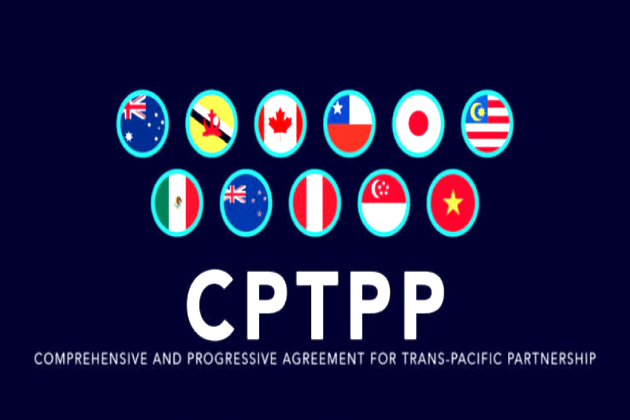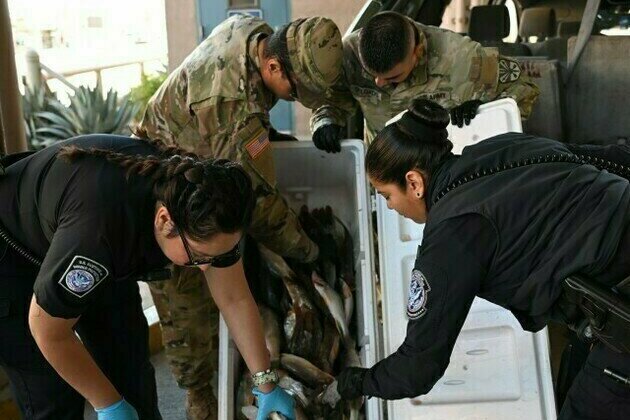Want Climate Solutions in Indigenous Lands? Sami Case Spotlights Global Push for Consent
The Energy Mix
16 May 2025, 22:27 GMT+10

This story was originally published by Grist. Sign up for Grist's weekly newsletter here.
Four years ago, Harvard University moved a long-planned solar geoengineering project from Arizona to Sapmi, the homelands of Sami peoples across what is now Norway, Sweden, Finland, and Russia. The Sami had no idea it was coming.
"We did not know about the plans until we got alerted by the [Indigenous Environmental Network] and they were saying, 'You should be aware of this,'" said Saami council member sa Larsson Blind.
Blind said that it's unlikely Harvard deliberately ignored consulting the Sami about the project before moving it to Kiruna, Sweden. More likely, she thinks, they weren't aware that they needed to.
"But at the same time, you don't need to do much research to know that Kiruna is in Sapmi, and that there is an Indigenous people," Blind said. "There is one Indigenous people in Europe, and that's the Sami people, and we are not unknown."
The idea behind solar geoengineering is that it combats global warming by reflecting sun rays back into space with chemical particles sprayed into the atmosphere. Known as the Stratospheric Controlled Perturbation Experiment, or SCoPEx, the Harvard project would have experimented with the dispersal of those chemicals over Sami lands. But this kind of climate manipulation goes against Sami traditional beliefs about caring for nature, the Sami council wrote in an open letter to Harvard that called for an end to the program. Critically, Harvard also failed to inform the Sami people of the project or obtain their consent before starting it, the council pointed out, violating their right to free, prior, and informed consent-rights enshrined in international law. Representatives with Harvard's SCoPEx project did not return requests for comment.
The Sami are not alone in experiencing such violations and joining the ranks of Indigenous peoples relying on international law to challenge "climate solutions" projects, like SCoPEx, in their territories.
For the third year running, Indigenous leaders have called for a permanent moratorium on carbon markets, carbon offsets, and geoengineering technologies at the United Nations Permanent Forum on Indigenous Issues, or UNPFII. They also demanded an end to all carbon market initiatives within the U.N., like the REDD+, a $5 billion payment scheme that aims to protect forests through private investment in the carbon market. That call, led by the Indigenous Environmental Network, or IEN, and supported by the American Indian Law Alliance, an Indigenous nonprofit, is now bolstered by an IEN report that documents multiple cases where carbon market, carbon offset, and geoengineering projects have violated Indigenous peoples' rights, and Indigenous people have challenged them. As carbon markets expand into Indigenous homelands, advocates hope these fights for Indigenous rights, in Sapmi and beyond, offer a roadmap to stop a growing industry from exploiting Indigenous peoples.
Depending on how a carbon offset project works to mitigate climate change in design and scale, it generates a certain number of carbon credits-the currency of the carbon market. This allows polluters to offset their emissions by purchasing these credits-governments, businesses, and organizations pay to sequester or remove carbon with things like geoengineering or forest restoration and conservation. Indigenous peoples' land is often targeted for these efforts, given that they manage or have tenure rights over about 40 percent of the world's ecologically intact terrestrial landscapes. Because these healthy ecosystems are prime locations for such work, Indigenous peoples living there can quickly become entangled with or impacted by a developing carbon market-often without their knowledge or consent.
The IEN report details nine cases of "lawsuits, formal complaints, and public advocacy" where Indigenous peoples, like the Sami, have invoked the United Nations Declaration on the Rights of Indigenous Peoples, known as UNDRIP, to confront and resist initiatives that threaten their lands and well-being.
"I do believe it's positive that UNDRIP is being used," Blind said. "Everytime it is cited and it gets recognition, that builds legitimacy. And when we use it boldly and with confidence and we do that together, that builds legitimacy."
(Editor's note: As of 2016, Canada is a full supporter, without qualification, of UNDRIP, which outlines principles of self-determination and free, prior and informed consent.)
Passed by the UN in 2007, UNDRIP contains 46 articles that set the standard for the recognition, protection, and promotion of Indigenous peoples' rights. The IEN study reveals that more than a third of them have been violated by climate solutions projects. Repeated infringements include a lack of transparency from companies, states, and organizations about the scale of their work, intentionally sowing division within Indigenous communities, increased violence and surveillance of Indigenous peoples, and violations to free, prior, and informed consent.
For some Indigenous communities, carbon markets present an opportunity to grow their economies and exercise their rights to self determination. And it's a lucrative industry: The voluntary carbon market saw $16.3 billion in funding by the end of 2024.
Francesca Hillery, a member of the Round Valley Indian Tribe in California, is partnerships director at the Indigenous Greenhouse Gas Removal Commission, or IGGRC, a collective of Indigenous nations in the United States working to mitigate climate change through the carbon market.
Hillery said carbon offset projects based in forest or ecosystem restoration often align with Indigenous values and benefit Indigenous communities. But the main benefit to tribes is the financial potential. Tribes in the U.S. need resources to run their governments, Hillery said, and carbon markets may present opportunities for economic growth. In 2015, California's first forest carbon offset project on Indigenous land was developed on the Round Valley tribe's land.
"I do understand that there's this whole critique against the commodification of nature," Hillery said. "I just think that tribes are looking for solutions for a bunch of different phenomena."
But for other Indigenous communities, the expansion of carbon markets raises concerns, especially as some projects have already resulted in Indigenous peoples being evicted from their lands or promised financial compensation that doesn't materialize. In Peru, for example, the Cordillera Azul National Park was created without the consent of the Kichwa people and other Indigenous communities whose territories it overlaps. Then, the Peruvian government and CIMA, the nonprofit set up to run the park, sold more than 28 million carbon credits for the project. According to IEN, the Peruvian government and CIMA refused to recognize Kichwa land claims while simultaneously profiting from carbon credit sales in the park. In an analysis of reports that detail carbon market impacts, the news outlet Carbon Brief found that more than 70% of the reports documented evidence of carbon offset projects harming Indigenous people as well as local communities.
All of the court cases outlined in the IEN report are of Indigenous people using UNDRIP to fight against carbon markets. But Joanna Cabello, a senior researcher with SOMO, a Netherlands-based organization that investigates multinational corporations and their impacts on people and environments, said rulings in support of Indigenous land rights are still a boon to communities who might welcome carbon projects. The same logic that upholds Indigenous land rights also affords them the right to choose what they want to do with that land, including joining the carbon market.
"The recognition of [Indigenous] rights is always a strong starting point for any type of [carbon market] project, as that would mean that they have the right to say no to the proposal as well as to hold the companies or organizations behind a project accountable," Cabello said.
Cabello has studied carbon offset projects for over 20 years and said that while these markets infringing on Indigenous rights is "not news," more courts are ruling in favor of Indigenous communities, which isn't usually the case.
In 2020, the Kichwa sued the Peruvian government, contesting its refusal to recognize Indigenous territorial rights, the creation of the conservation project on their territory without consent, and the systematic exclusion from making decisions about or receiving financial benefits from carbon credit sales. In 2023 and 2024, the court agreed with the Kichwa, becoming the first judicial rulings in Peru to recognize and uphold Indigenous territorial rights.
"Hopefully, the more and more that communities are able to reach these verdicts, the more that also governments-even if it's not at the national level, but municipal level or regional level-can start checking who is really benefiting from doing these projects in their territories," Cabello said. "Hopefully some will side more with Indigenous peoples' rights."
Though it's just one tool, Cabello said using UNDRIP like this shows Indigenous communities that denouncing abuse can be met with meaningful recognition-and tells industries that people are watching their work.
Related: Federal Court Sides With First Nation, Puts Chalk River Nuclear Waste Dump on Hold
Similarly, the letter that the Sami council issued to Harvard demanding an end to SCoPEx clarified the risks and violations associated with such a project. Not only is it required to obtain consent for activities on their lands, Indigenous people have the right, the Sami council reminded the university, to maintain and strengthen their spiritual relationship to their traditional lands, uphold their responsibilities to future generations, and make decisions about the territories and resources under their stewardship, including air.
After continued opposition, Harvard's solar geoengineering project was terminated in March 2024.
"That's something, because we don't have many other examples of a huge institution like Harvard backing down after critique from Indigenous peoples," Blind said, noting that this issue was successfully addressed outside the court of law.
"It is significant to see that it is actually an option to halt something when you realize that it wasn't done right."
Source: The Energy Mix
 Share
Share
 Tweet
Tweet
 Share
Share
 Flip
Flip
 Email
Email
Watch latest videos
Subscribe and Follow
Get a daily dose of Arizona Herald news through our daily email, its complimentary and keeps you fully up to date with world and business news as well.
News RELEASES
Publish news of your business, community or sports group, personnel appointments, major event and more by submitting a news release to Arizona Herald.
More InformationBusiness
SectionTariff threat pushed US smartphone shipments up by 30% in March
WASHINGTON, D.C.: Smartphone shipments to the United States jumped 30 percent in March as manufacturers including Apple, Samsung, and...
Kraft Heinz to invest $3 billion in US plants despite gloomy outlook
CHICAGO, Illinois: Kraft Heinz is committing US$3 billion to revamp its U.S. manufacturing plants, marking its largest investment in...
Sweden backs EU entry into Pacific trade bloc
STOCKHOLM, Sweden: Sweden plans to propose that the European Union join the Pacific Rim trading bloc, the CPTPP, aiming to create the...
Wall Street surges with major indices making weekly gains
NEW YORK, New York - U.S. stocks closed higher Friday with all the major indices capping weekly gains in the process. Markets are...
US Energy Department plans major regulatory rollback
WASHINGTON, D.C.: The U.S. Department of Energy has announced plans to eliminate or amend more than 40 regulations as part of President...
US inflation slows to 4-year low as food prices fall, rents rise
WASHINGTON, D.C.: In April, U.S. consumer prices went up slightly. Rent costs increased, but food prices went down, which helped keep...
Phoenix
SectionCiting history, US appeals court upholds ban on gun for felons
PASADENA, California: A U.S. appeals court late last week upheld a federal law that stops felons from owning guns. The court rejected...
Want Climate Solutions in Indigenous Lands? Sami Case Spotlights Global Push for Consent
This story was originally published by Grist. Sign up for Grist's weekly newsletter here. Four years ago, Harvard University moved...
Arizona National Guard's Task Force SAFE Strengthens Border Security
NOGALES, Ariz. - In an effort to disrupt the flow of illegal drugs into the United States, Arizona National Guard members with Task...
Seahawks Round-Up: All Things NFL Schedule Release
All the Seahawks news you might have missed from this week. Seahawks.com Good afternoon, 12s. Here's a look at what's going on...
Zero to 100: A numerical look at the Cowboys' 2025 schedule
Tommy Yarrish FRISCO, TexasThe NFL released the Cowboys' 2025 schedule on Wednesday, as Dallas prepares for the first year of the...
2025 Schedule Roundtable: Most Interesting Rookie Matchup
A new quarterback, a dynamic new receiving threat and a dangerous new edge-rushing duo, all within the Buccaneers' own division? Our...












